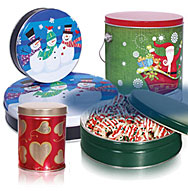Metallic Casket
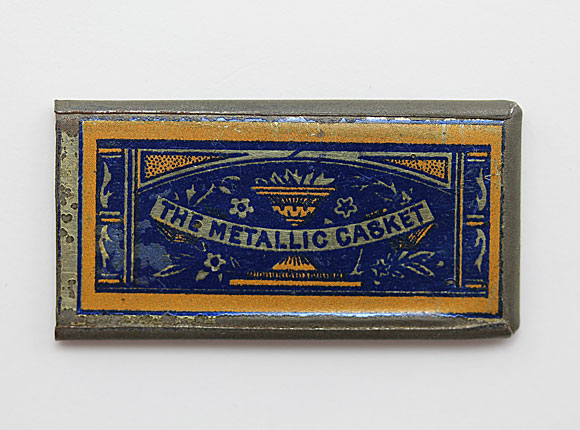
Needle Case (photographs courtesty of Lynda Herrod)
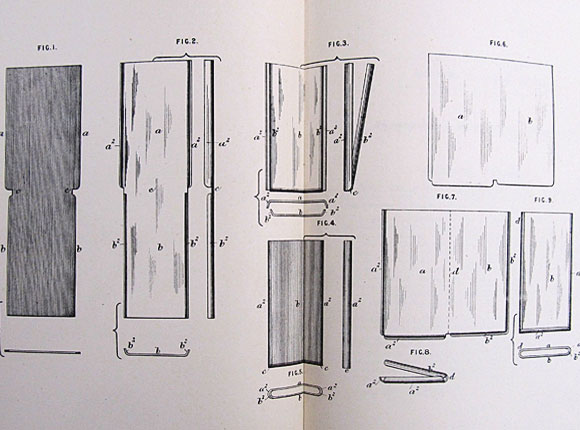
UK patent 1884-1534 drawing
Design Details
Needle Case Type: |
Flat-Names |
Patent/Registered to: |
William Avery of the firm William Avery & Son, Needle Manufacturer from Redditch |
Patent/Design Representation #: |
Mechanical Patent #: 1534 |
Patent/Design Registration Date: |
January 16, 1884 |
Location of Patent/Design Registration: |
British Library - Business and Intellectual Property Centre - London
|
Reference #: |
1884-1534 |
Dimensions: |
4.1 x 2 |
Material: |
Tin |
Name Variations: |
W. Avery & Son - Headless Cross, Redditch |
Other Variations: |
None |
US Patent |
US 1885-313797 |
Additional Photographs
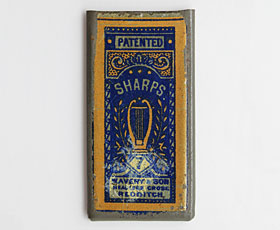
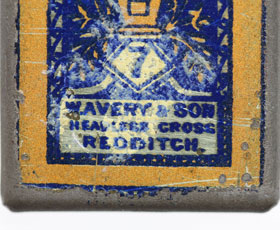
Back an signature detail
Facts
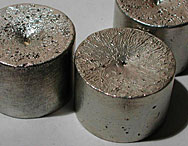
Tin is one of the seven metals of antiquity, first discovered around 1750 BC. When refined, it is a grayish or silvery-white metal known
for its resistance to corrosion and its ability to coat other metals. As a result it is most often used as a plating on the steel sheets used
to form cans for food containers. Tin is also combined with copper to form bronze or pewter.
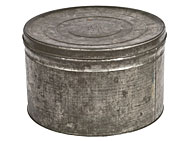
History
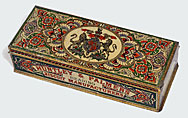
Thin sheets of iron coated with tin, called tinplate, became available in England during the mid-1600s and were used to make a variety of metal
containers. During the 19th century a new tinplate process made with steel, an alloy of iron and carbon, was developed and perfected so food
products could safely be stored in sealed cans or containers with slip covers, hinge tops or lids. Tinplated steel was stronger and more
durable than tin-plated iron. Also by the middle of the Victorian period the process of lithographic metal printing was created which provided
manufacturers with the ability to place decorative color prints onto these tinplated containers. Although the early designs were simple and
the colors limited, these containers became so popular that they are commonplace even today. These items are simply known as “tins”.
Click on the Victorian tins above or below to see more larger versions of them.
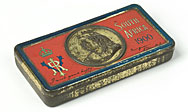
Miscellaneous

How can you tell if something is made of tinplate? Antique items made of tin have a grayish base color like the ones pictured in the "Facts"
section above. Since tinplate contains a thin interior layer of iron or steel, it will be magnetic. Simply take a magnet and hold it
next to the item in question. If you can feel the magnet pull towards the object that means it is composed of a metal that is magnetic.
The most common metals found in antiques are copper, bronze, pewter, silver, gold, tin, lead, iron or steel. Of these only iron and steel are
magnetic. Therefore is the item in question is grayish in color and is magnetic, there is a good chance it is made of tinplate. Although
less expensive aluminum and other metal alloys have replaced the tin in many containers today, items like the kitchen canister set pictured above and
the candy and cookie tins pictured below contain some quantity of steel as these modern “tins” are also magnetic.
